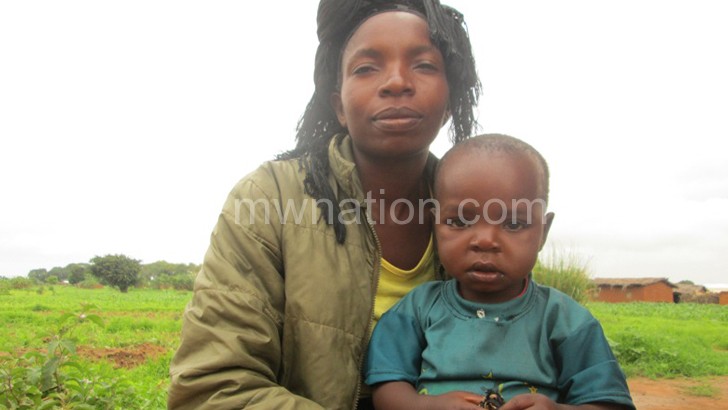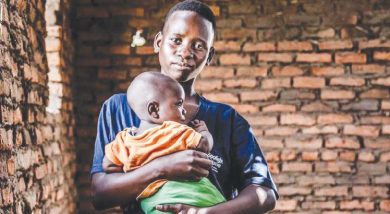Villagers’ struggle to access healthcare
Like in most rural areas in Malawi, people of Kapopo Village in Sub-Traditional Authority (ST/A) Kapopo Mhlanga in Mzimba face challenges to access health services.
With an area of 10 430 km², Mzimba is the biggest district in Malawi. However, it has one of the highest population not served with a health facility.
Despite the World Health Organisation (WHO) recommendation that people should not travel over eight kilometres to access a health facility, people of Kapopo—a remote area south of Mzimba—walk more than 15km to their nearest clinic, Jenda Rural Health Centre.

Other nearby facilities are Vibangalala Health Centre (19km), Edingeni (44km), Embangweni (23km), Mabiri (17km) and Kalikumbe (32km).
Noticing the challenges, people of Kapopo did not sit on their laurels waiting for government to provide the much-needed health services.
They mobilised resources to have their own clinic. But, to their disappointment, the building has been idle for seven years now.
“With support from our member of Parliament, we mobilised resources and started constructing a clinic to help reduce the long distances we travel in search of medical care,” says ST/A Kapopo Mhlanga.
They finished constructing the clinic in 2008. But since then, it has not been operational.
“We continue to travel long distances in search of medical care. Pregnant women are the most affected,” says Kapopo Mhlanga.
True to his words, statistics indicate that such long distances have compromised maternal, neonatal and child healthcare services in the area.
This will hamper efforts to have all pregnant women deliver in health centres with the assistance of skilled health workers. There has been some progress in women that deliver in health facilities: from 57.2 percent in 2004 to 73 percent in 2010, according to the 2010 Malawi Demographic and Health Survey (DHS).
The area’s disease control surveyor assistant Spencer Longwe says part of the reason is that the district hospital visiting team (DHT) rarely visits the area.
“Kapopo Trading Centre has a population of 5 810 people. But factoring in its surrounding areas such as Kamalibwe, Mtuzuzu and Kasukanthanga, the population comes to about 10 000 people. As such, the area needs a health centre to address the challenge of long distances.
“As it is now, cases of women delivering at home are common. Last month alone, we had 13 cases of home births, and the newborns are unvaccinated against diseases such as polio and tetanus,” says Longwe.
Martha Mwale, 28, from Hannock Banda Village, is one of the 13 victims. She gave birth in her eighth month of pregnancy.
“It was on May 28 2014, a month before my due date, that I went into labour. In fact, it was a day before I had planned to go to Jenda Health Centre for camping. When I went into labour, we hired a bicycle taxi but after travelling for 30 minutes, I could not bear to sit on the bicycle anymore,” she explains.
Unfortunately, Kapopo is rarely visited by vehicles, which would have rushed Mwale to the hospital.
“I ended up delivering by the roadside without any expert assistance,” she says.
Mwale says they proceeded to the clinic after delivering a baby boy, named Misheck, who is now two years old.
Mzimba, according to government’s analysis of the proportion of Malawi’s population living within an eight-kilometre radius of a health facility, is the seventh worst served district in the country as 24 percent of its population do not live within the radius.
According to a review in the 2010-2016 Malawi Health Sector Strategic Plan (HSSP), the six other districts that make the shortlist are Likoma (which has no government facility), Chitipa (51 percent), Kasungu (38 percent), Balaka (32 percent), Chikwawa and Mangochi (27 percent each).
Former spokesperson for Mzimba District Health Office (DHO), Raymond Kabaghe said the challenge with most idle health centres in the district is that they were constructed without the knowledge of the DHO.
He said that has made it difficult for government to open the facilities or post staff to the areas. The other clinic that has been idle for years is Edingeni Health Centre. It took winds to blow off the roofg of the old clinic for government to start using the new buildings.
At Kapopo, however, government is yet to deploy staff because the clinic has no staff houses and water.
“We are moulding bricks for the houses. All we need here is an operational health centre to ease the pain of travelling for health services,” said Kapopo Mhlanga.
But government promises, through its health sector reforms, to increase access to free healthcare for all Malawians despite living in areas where there are only mission-owned hospitals.
Director of policy in the Ministry of Health, Dr Dominic Nkhoma, says one of the reforms is to review a memorandum of understanding (MoU) with the Christian Health Association of Malawi (Cham).
He says in the new MoU, government intends to cover all costs of delivering essential health services for free in facilities outside an eight km radius.





